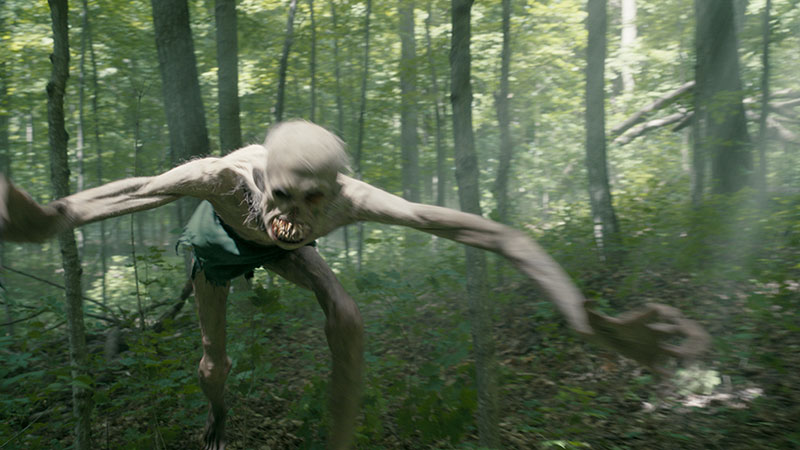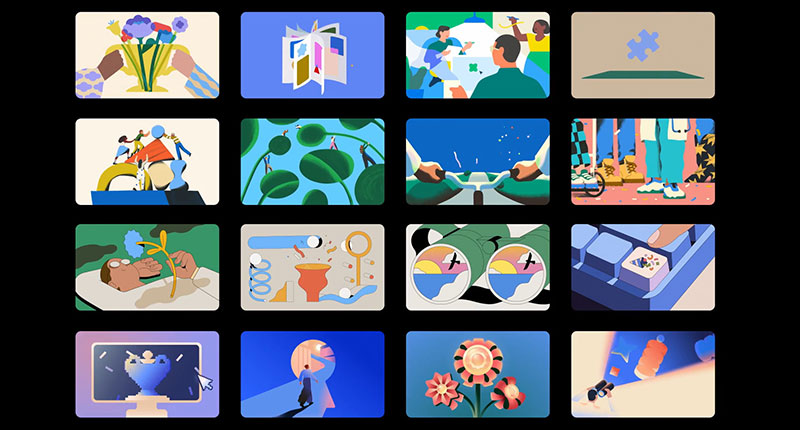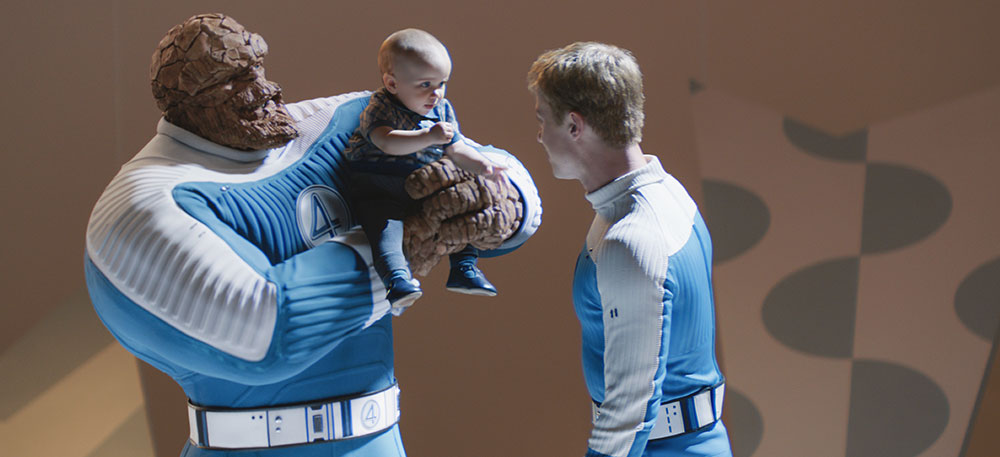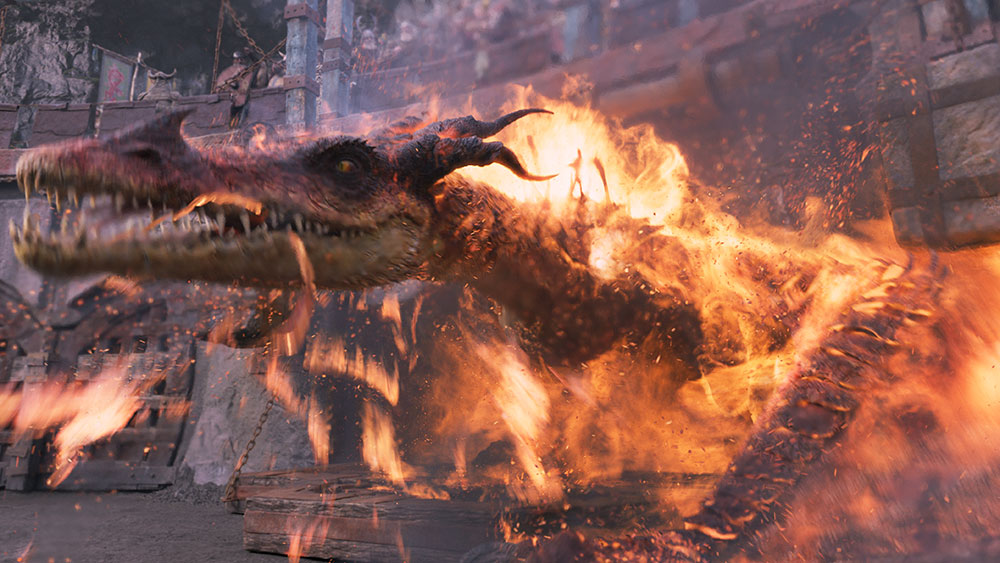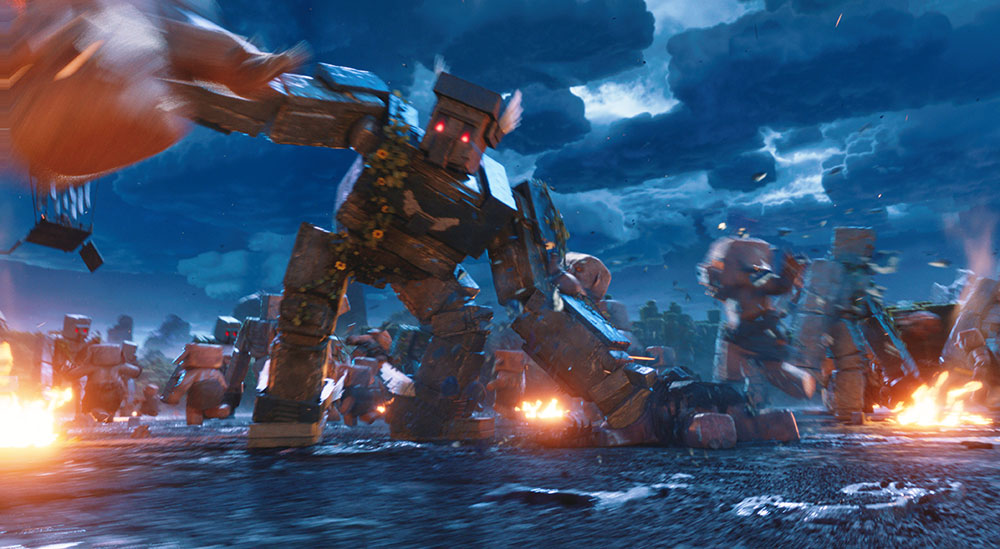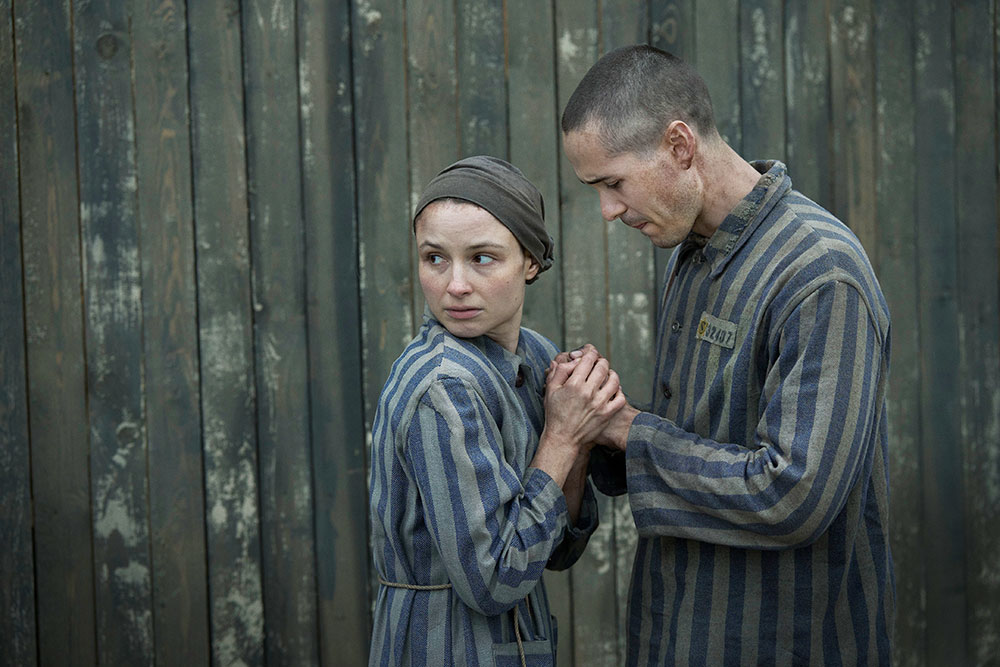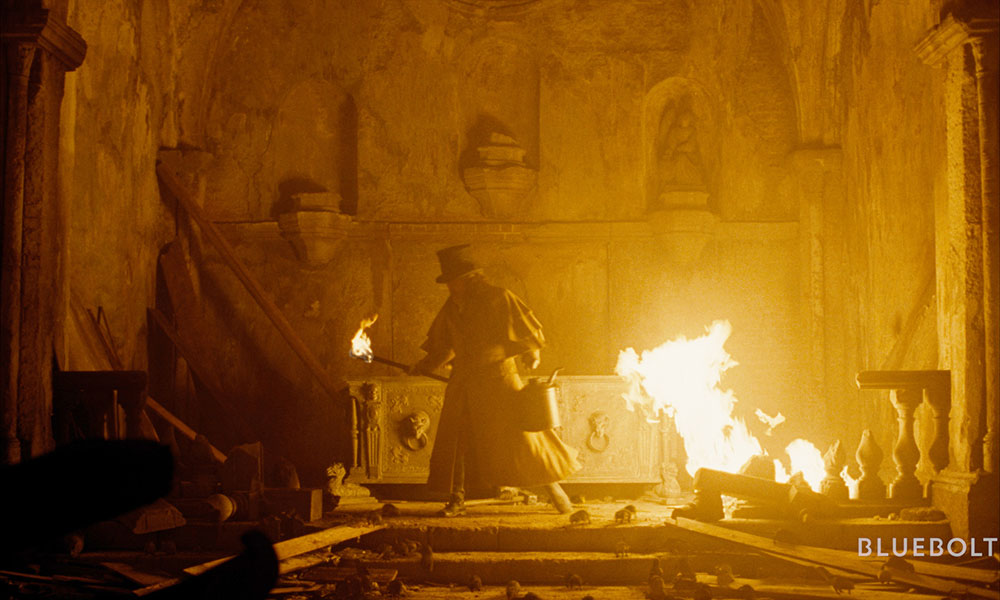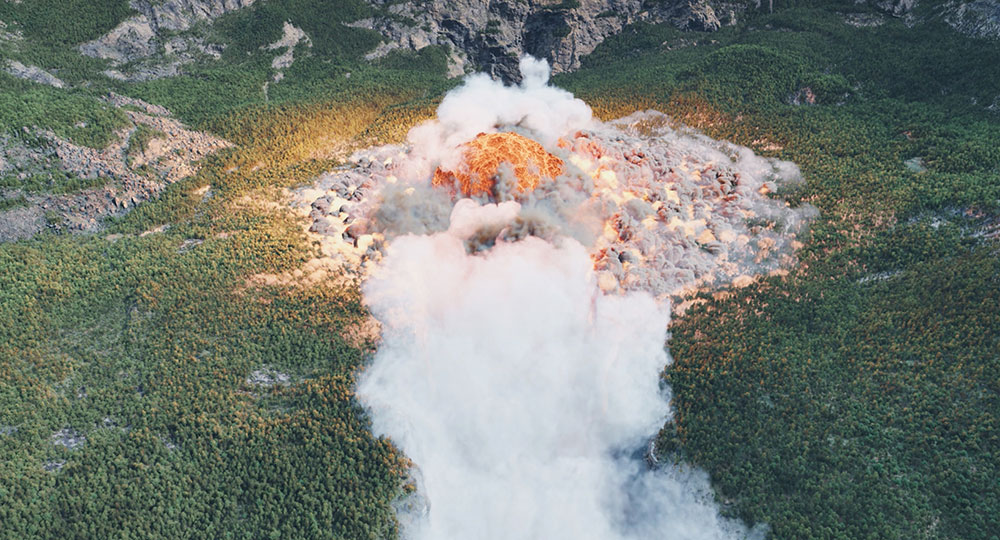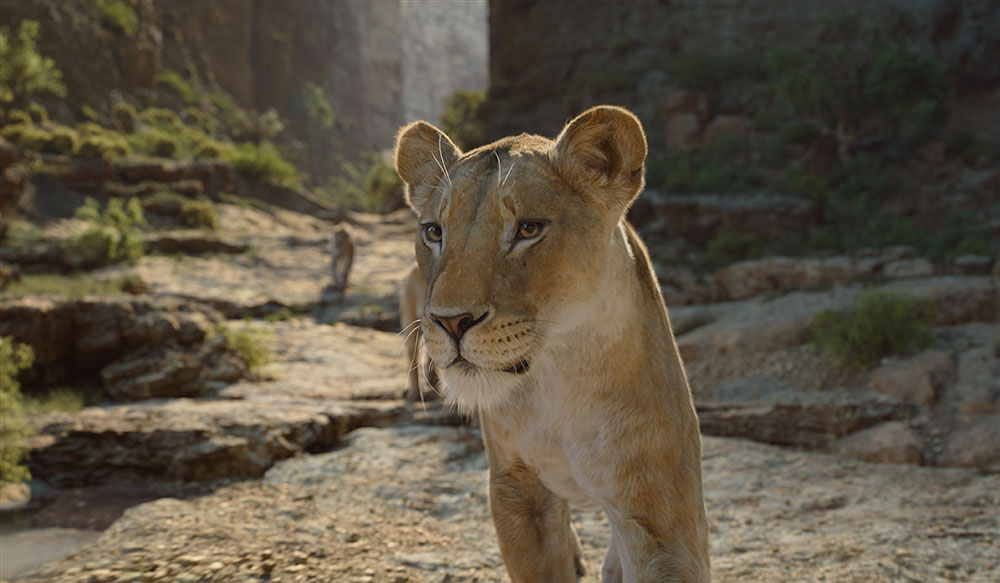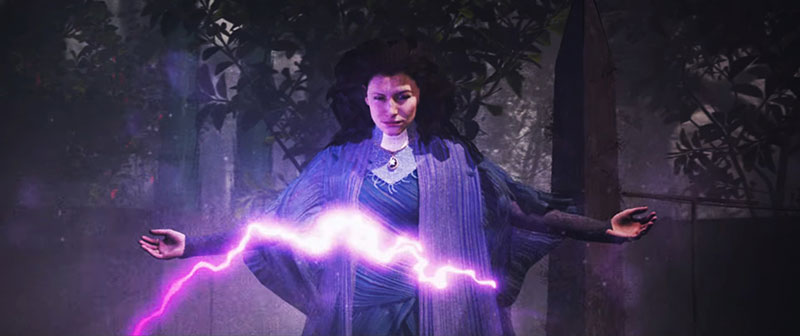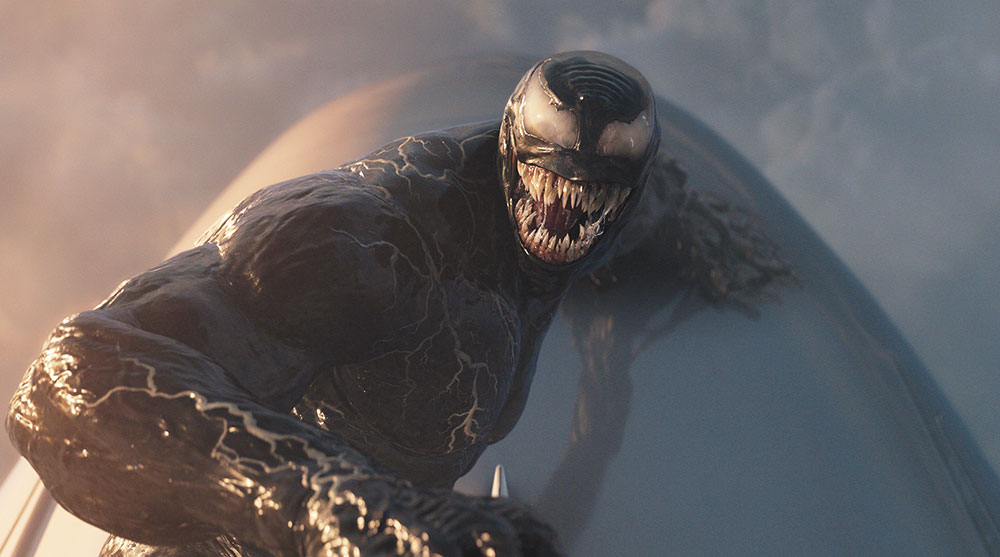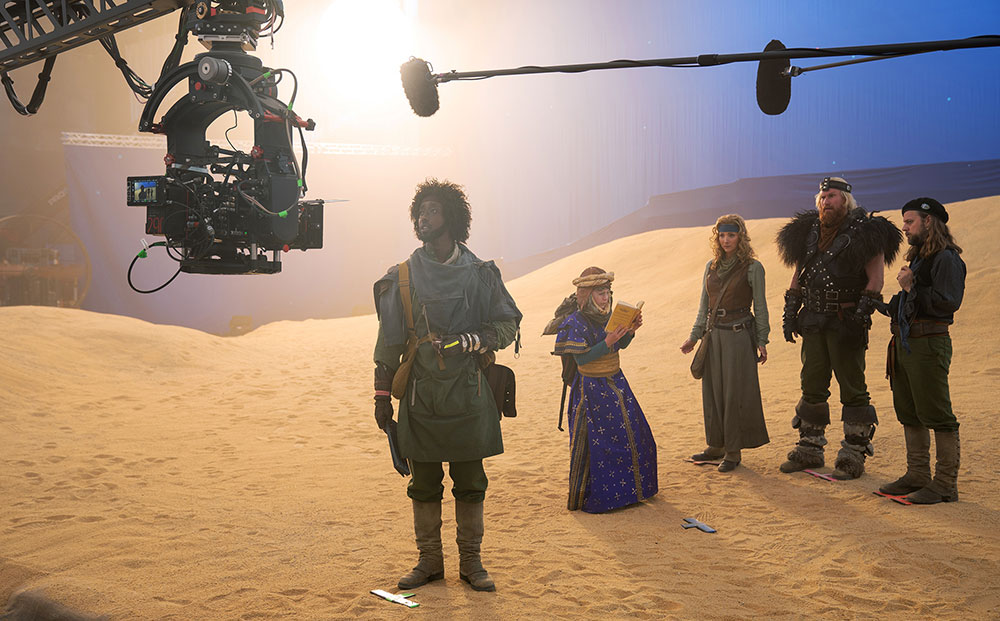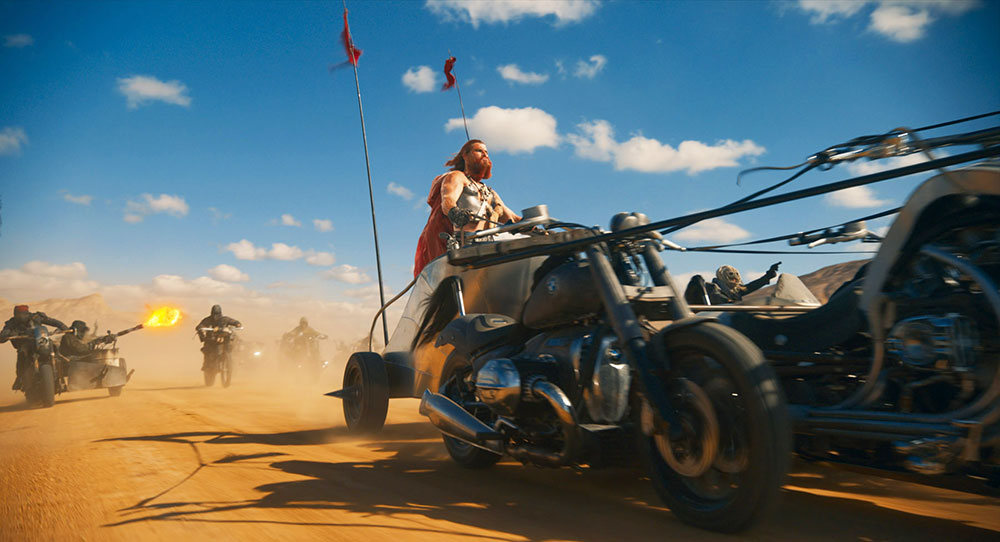FOLKS’ VFX Supervisor Lionel Lim talks about combining CG work and digital matte painting to build the story’s diverse cityscapes and traverse its parallel worlds.
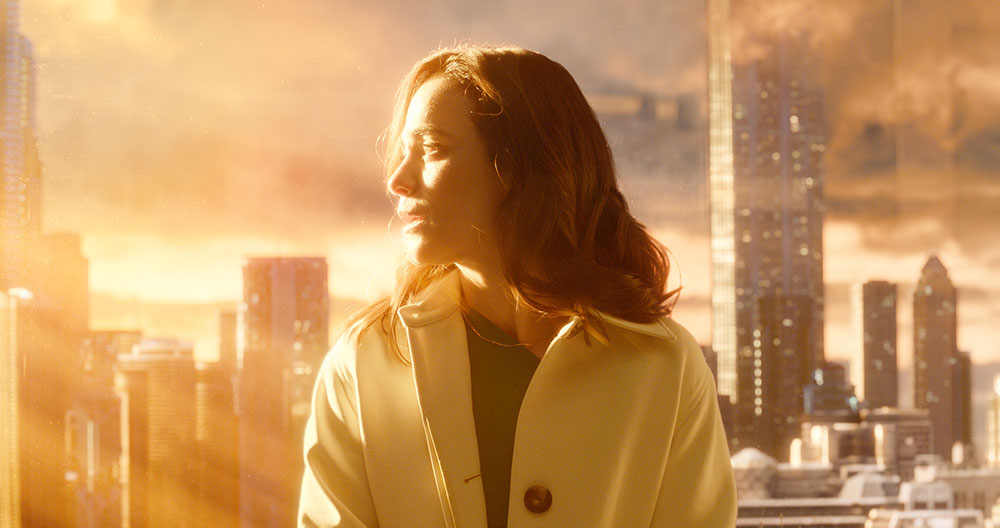
VFX Supervisor Lionel Lim and VFX Producer Philippe Massonnat at FOLKS VFX led the team in creating 12 distinct environments for the for AppleTV+ show Dark Matter. The project involved combining CG work and digital matte painting that focused on the story’s many diverse cityscapes – mainly variations of Chicago – ranging from a frozen, ice-locked world to desert, desolate and ultramodern settings. Overall, FOLKS' contribution to the show spanned 699 shots over nine episodes.
Based on a novel, Dark Matter is a sci-fi thriller by Blake Crouch that traverses parallel worlds, quantum mechanics and the idea that every possible outcome of every event creates a new universe, or version of reality. Conflicts arise as those worlds collide. ‘When we first heard about Dark Matter as a potential project through our producers at FOLKS VFX, we were thrilled about working on the series adaptation,” Lionel Lim said. “The chance to bring this story to life on screen was exciting and inspiring for our entire team.”
The story hinges largely on travelling between dimensions. The characters enter a metal cube called the Box where, under the influence of a mind-altering drug, they imagine a particular reality they are seeking. When they exit the box, they find themselves in that reality they had been imagining.
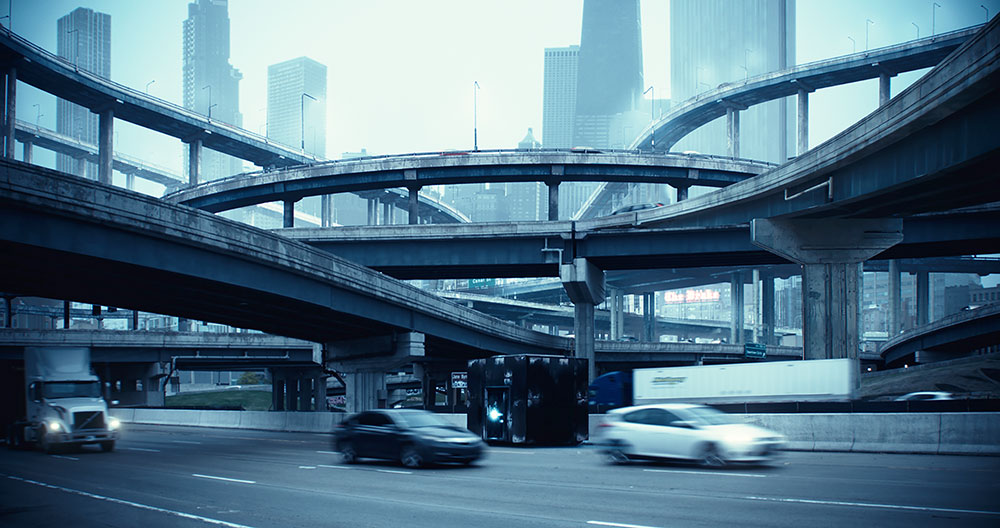
One City, Many Cityscapes
The team’s main focus was a series of environments that visualise the story’s many cityscapes. These cites are parallel worlds – every cityscape FOLKS worked on is a variation of Chicago, and called on the team to recreate it as 12 distinct environments.
“Our initial discussions about the various worlds in Dark Matter focused on establishing a solid foundation and understanding of the changes each version of Chicago would undergo,” Lionel said. “Each world possesses a distinct visual language, but they all needed to remain grounded in reality. The expectation was to produce realizations of what author Blake Crouch had in mind but, in order to make them believable, steer away from looks that rely too much on fantasy. With that idea firmly in mind, we quickly moved on to concept development.”
After the initial conversations, the team started gathering as many references as possible relating to Chicago itself from various sources, including pictures, footage, maps and other material. Meanwhile, they were also working to meet another set of demands that came not from specific people but from the need to work within an episodic TV time frame. Speed and efficiency were essential and also fast iteration and the ability to make changes and respond to new requests.
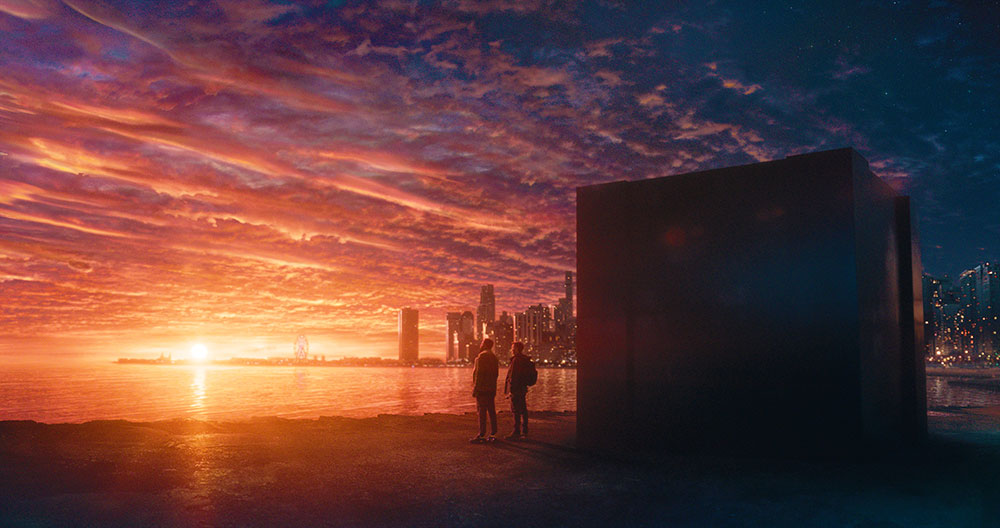
The Real Chicago
“We focused first on just recreating the actual location from real life. Our CG team built a rough model of Chicago using satellite data and maps that closely matched reality. Aiming to spend most of our time on what the audience was going to see on screen, we made some sections more accurate and detailed than others. Meanwhile our art department created concepts for each Chicago variation, seeking early approval with the initial footage,” said Lionel.
“Then, our Chicago model environment was used, alongside our concept art, as a base to feed each world's variations into. From there, each re-creation went through multiple iterations, as required, throughout the show.”
Although FOLKS wasn’t on set to supervise, the fact that the series was shot on location in Chicago was a built-in advantage for their team. He said, “Since we always needed to match reality in some fashion, in some worlds more than others, having a real-world location to fall back on when in doubt really helped us result in more grounded CG. In any case, as we chose to re-build a lot of the city itself, we could cover all our bases and control everything in the shots.”

Building up a library of elements to use and re-use in shots was another way to work on the worlds more efficiently. “We built specific props and assets to help dress the city sets and adapt the look for each world, whether it was snow banks, snowed-in trees, houses, boats, sand dunes, buildings with a stylised sci-fi look and so on. This way we could apply a different set dressing on the city itself for each specific world by adding elements on top of either real footage, or added into our 3D model.”
Approaching the Shots
The live action that FOLKS’ environments were used with was captured in a number of ways. “It depended on the sequence. Some of them, like the snow world, were shot on location, and some were shot on green screen, like the Solarpunk world in later episodes. Whenever we worked on a world seen from inside the box itself, the action was always filmed on a green screen,” said Lionel.
Faced with handling a wide variety of biomes across the different Chicago worlds, to use in shots that included considerable camera moves, they decided on a mixed 2.5D shot-based approach to avoid too much heavy rendering. He said, “In almost every shot, and for almost every world, we projected detailed matte paintings over 3D geometry, producing as complete and accurate a render as possible as a base. This technique meant we could iterate quickly and with a lot of flexibility - which you always need when doing episodic work.
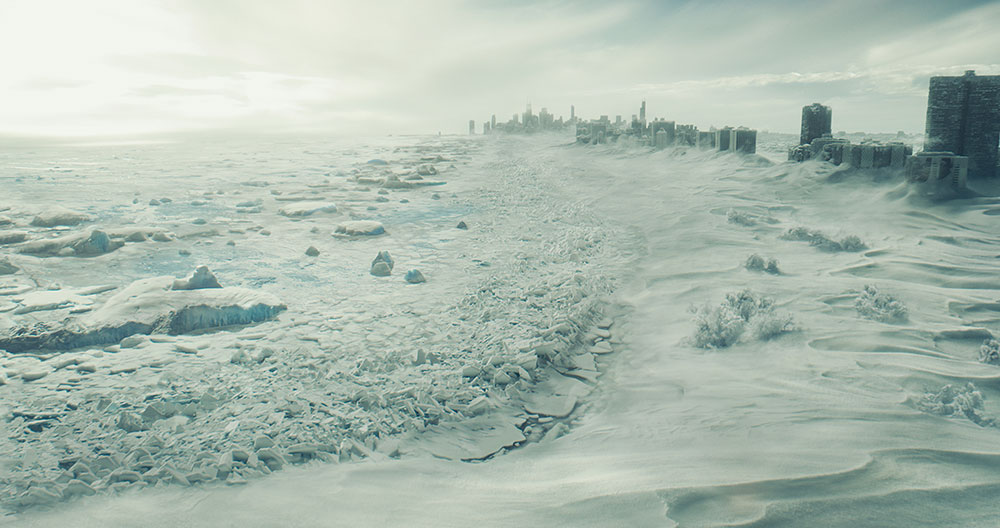
Without the demands of camera motion influencing our decision to work in 2.5D, we would have chosen to go ahead entirely in 2D. As it was, we had to be very rigorous about taking the proper layout steps so that we would never need to change camera orientation once we started painting environments. We also went from macro to micro so we wouldn’t waste time on the details no one would see.”
Balancing the Light
When it came to lighting, they were able to use both the live action and the concept art as cues. “Our internal concept drawings were made early and had their own specific look that we later adapted to the lighting on the plate. It was more about making adjustments to make sure we told the story, so we were pretty flexible as long as the look held together once the footage was integrated within the environment.
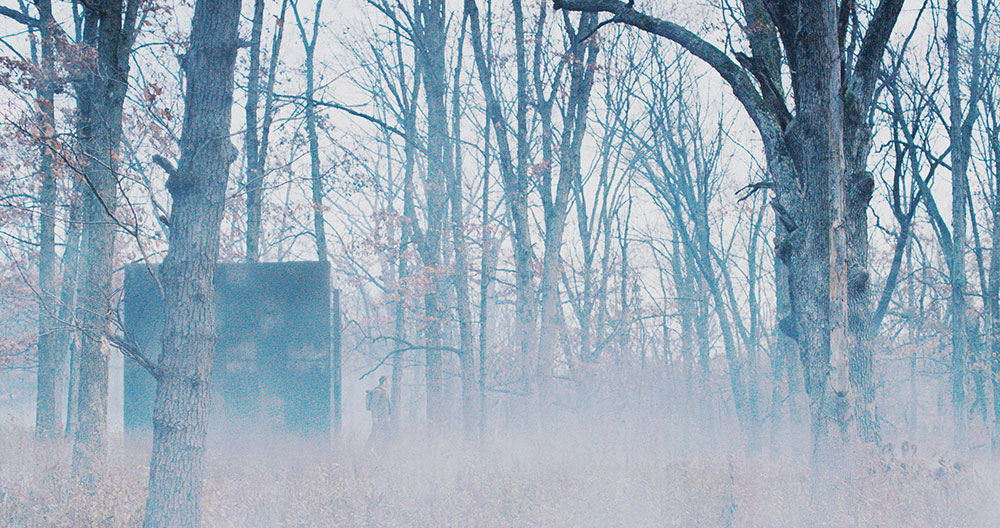
“Level of detail was also driven by what was seen in-camera for each specific shot. Anything else we wouldn’t really spend much time on. For most shots, motion came mainly from the camera movement itself and the actors, but we did add some elements of blowing snow in the snow world itself. In the Solarpunk world, we included moving foliage and a moving train.”
Reaching Great Heights
Both the snow world and the Solarpunk world turned out to be the team’s biggest challenges. As a genre and a vision of the future, ‘Solarpunk’ is about interconnections with nature and community, and considers how the future might look if people could actually solve the major contemporary challenges of today, emphasising sustainability, environment impact, climate change and pollution.
Lionel said, “The production really wanted the audience to feel how impressive this Solarpunk world was. Our main opportunity to do this came when creating a glass elevator that carries the characters up the exterior of an extremely tall building, giving everyone an expansive view of this city.”
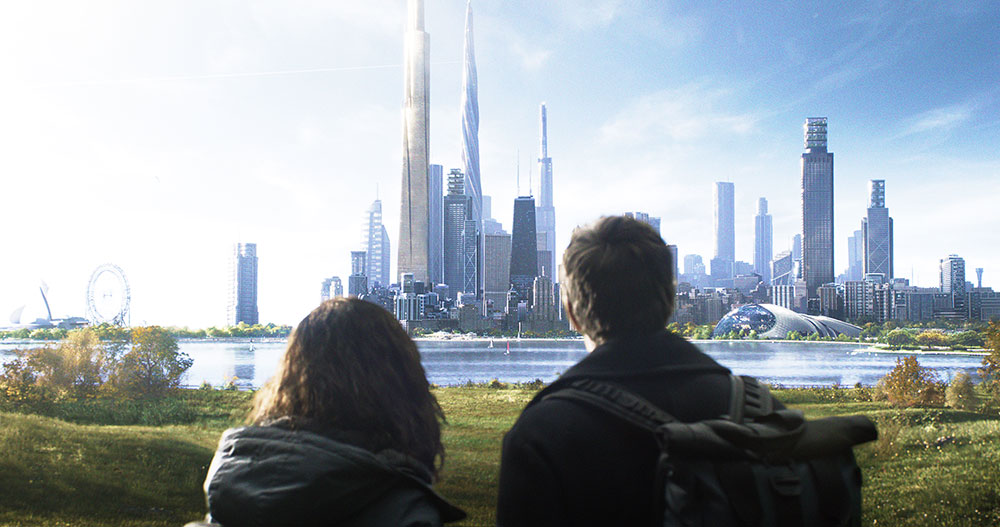
The elevator was a key element in Blake Crouch’s story that FOLKS could use to highlight the nature of this world when we go up in the elevator the first time. It was a sequence where emotions were important. Later on in the story, when the elevator descneds, the way the light changes and how the scene goes from dark clouds to bright golden light was built especially to emphasize how the main character was feeling.
“The design really was a collaboration,” said Lionel. "On one side, we made our own concepts and gathered our own references, but we also received elements and concepts from other vendors or from the client itself. It was always about bringing Blake Crouch’s vision to reality. FOLKS values are driven by passion, expertise, creativity and collaboration, and this project was no different."
Parallax and Layering
For this specific sequence, only the foreground elements with the actor were filmed. “Everything outside the window is CG using our 2.5D approach. We went through a few iterations where we tried using drone footage, but we ended up realizing that CG would be the best approach," Lionel said.
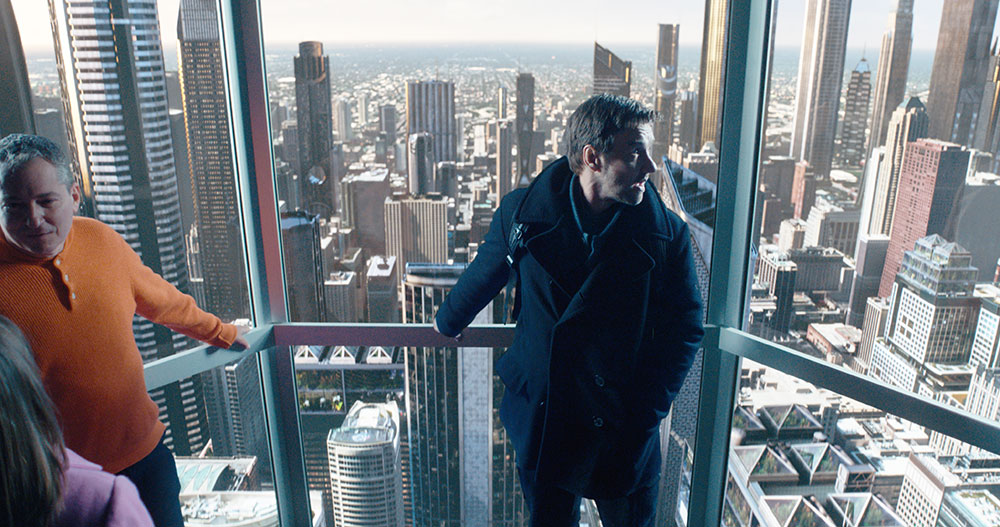
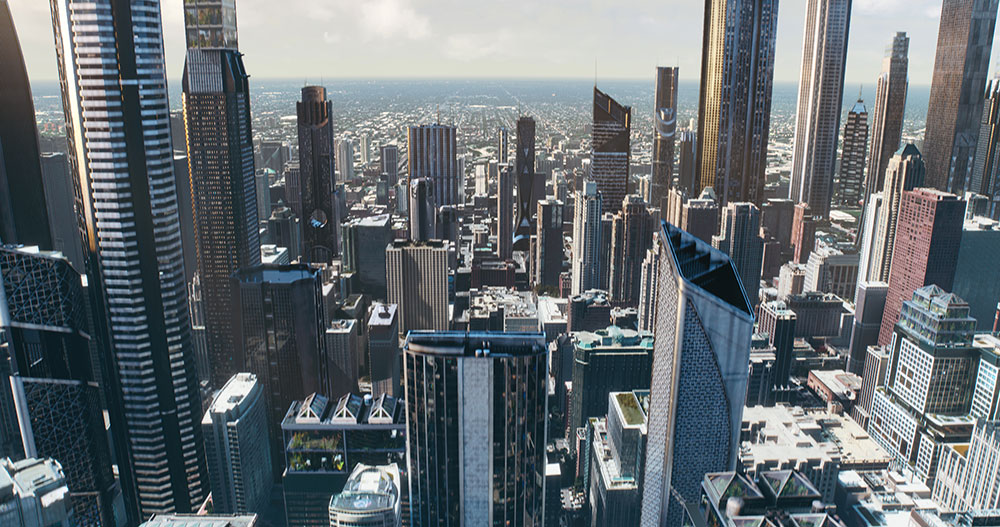
“One important technique that helped us move forward on this sequence was ensuring that every camera in those elevator and restaurant shots was looking at Chicago in the right direction relative to the fictional building's location and orientation within the city. This is where having a proper layout was key. It allowed us to focus only on what was seen and ensure that everything was accurate relative to the real world.
“Also, the elevator is supposed to travel hundreds of floors up - we spent some time figuring out how fast we could go up in space without making it look odd. Managing the huge parallax you would have from going up so far, so fast, was critical to help sell this shot. To this end, layering details in depth was an important part of our process. To achieve this layering, we started by creating not only futuristic Solarpunk buildings and greenhouses, but also older historic buildings, which really helped ground it in reality.
“Using different types of atmospheric details also helped. Atmospheric perspective, subtle god rays sandwiched between buildings, cloud shadows breaking up surfaces, feeling the curvature of the earth at a distance, layering CG clouds around the buildings, letting the camera go through those clouds – all of this contributed to selling the incredible height the elevator was reaching while making the vista itself believable.”
Snow World

The visual language for the snow world was qute different and focused on capturing the appearance of snow drifts as if a massive amount of snow had accumulated over time and was then sculpted by the wind, both on the ground and around buildings.
“We weren’t looking for heavy, wet snow or something too icy for the cityscape itself,” he said. “Snowy landscapes and snow in general have inherent qualities that were fairly tricky to recreate. There are many different types of snow, and snow fields themselves are very layered by nature. Snow needs to both reflect light a certain way but also refract some light so as to not feel too solid. It's easy for it to look like white sand, which we often had to fight against.
"The same world also had a frozen sea with giant icebergs. Because that isn’t something we often see alongside city shorelines in our day-to-day lives, the biggest challenge was making sure these elements didn’t clash too much with the rest of the snowy landscape, as it has very different qualities compared to the cityscape. What helped the most here was making sure we had a gradual transition in shape, material and frequency – going from a few big icebergs to a lot of smaller broken ice sheets that all culminated into this big ice wall along the shore." folksvfx.com
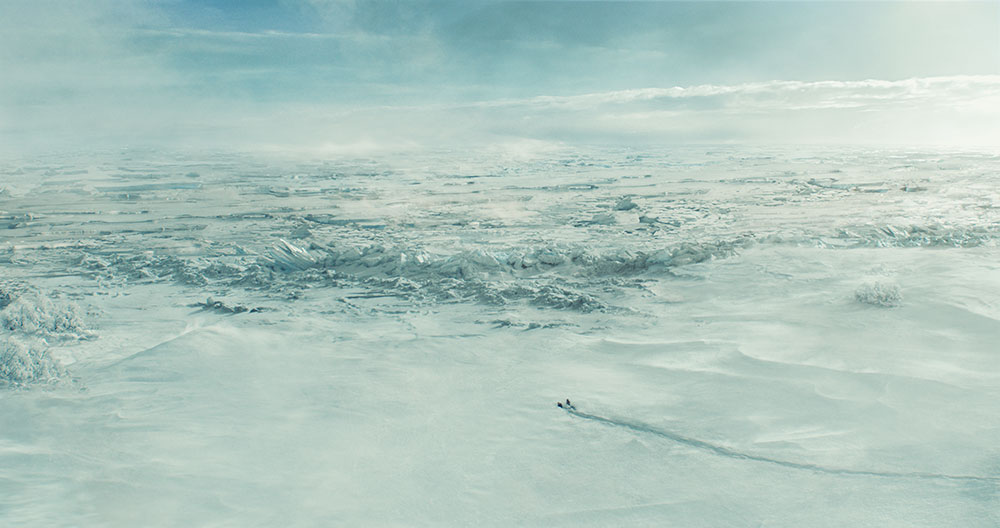
Words: Adriene Hurst, Editor


